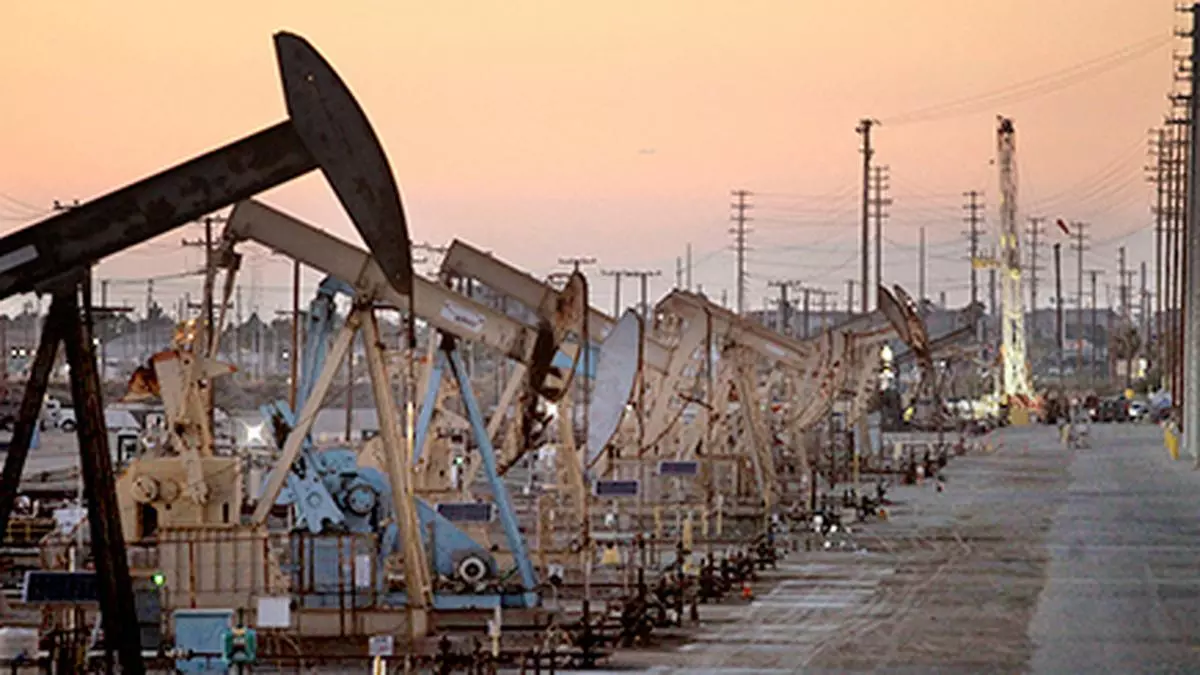Oil Prices Slump Amid OPEC+ Cuts and Demand Fears
Oil markets face a precarious balance as OPEC+ extends cuts into 2025, investors react negatively, and US manufacturing data dampens demand outlook.
Published June 05, 2024 - 00:06am

Image recovered from thehindubusinessline.com
Crude oil futures have been trading lower as global markets react to the OPEC+ announcement extending production output cuts into 2025, coupled with weaknesses in US demand. Brent and WTI have both seen significant price drops, with Brent settling below the $79 mark for the first time since February. Market analysts cite both the extended output cuts and the US manufacturing data signaling a contraction as contributing to the downward pressure on oil prices.
The OPEC+ alliance's decision involves a phased unwinding of about 2.2 million barrels per day (bpd) cut from October 2024 to September 2025. Additionally, the group has authorized the UAE to increase production gradually, starting January 2025. This move has been interpreted by traders as a signal of a potential increase in supply and has thus led to a drop in oil prices. Furthermore, ceasefire talks in the Middle East are alleviating some of the supply concerns that typically bolster oil prices in times of regional instability.
Another contributing factor to the decline in oil prices is the US economic landscape, notably manufacturing activity slowing for the second straight month and expectations of a cut in interest rates by the Federal Reserve, which can affect the value of the dollar and thereby the price of commodities like oil. Moreover, traders are anticipating US inventory and product supplied data for additional indications of domestic oil demand.
These recent developments cast doubt on demand projections, with some OPEC+ members potentially pressuring to gain a larger market share. As the economic outlook remains uncertain and several macroeconomic indicators suggest a weakening demand, OPEC+ faces challenges in maintaining its strategy against the backdrop of supply dynamics and demand signals.
The situation within OPEC+, the group comprising the Organization of the Petroleum Exporting Countries along with non-OPEC partners like Russia, is carefully managed to accommodate the various needs of its members, while also aiming to influence global oil prices through collective decision-making regarding production levels. The phased easing of the production cuts agreed upon by OARC+ is a clear example of the careful balancing act the group is attempting to achieve between supporting oil prices and maintaining market share in a highly competitive global market.
Investor sentiment has also been influenced by the Federal Reserve's monetary policy. The anticipation of interest rate cuts aims to combat disinflationary pressures in the United States but adds another layer of complexity to the oil market, as it could potentially weaken the U.S. dollar. A weaker dollar usually makes dollar-denominated commodities like crude oil cheaper for holders of other currencies, which could spike demand but this is unsettled by the underlying economic concerns.
In times of fluctuating oil prices, energy companies may adjust their investment and operational strategies. Cost-cutting measures, revaluation of projects, and shifts towards renewable energy sources can become more pronounced in the strategies of oil-major companies. These corporate adjustments could have significant impacts on employment, technology development, and the pace of transition towards greener energy sources.
The global oil markets are also witnessing changes in trade flows and procurement strategies. Asian economies such as China and India, which are major importers of crude oil, might leverage the changing market dynamics to negotiate better terms or diversify their supply sources. Additionally, geopolitical developments, such as improving relations between the US and Iran, could lead to the easing of sanctions and a subsequent increase in Iranian oil exports, which would add further supply and potentially depress prices.
Environmental considerations are also playing a role in shaping the future of the oil market. As climate change initiatives gain momentum and the push towards a low-carbon economy intensifies, oil-exporting nations and corporations are exploring sustainable energy solutions and diversifying their energy portfolios. The long-term impact of such transitions on oil demand is being closely monitored by the market.
As we move forward, the key questions revolve around how long the OPEC+ countries can sustain the delicate balance of protecting prices without losing market share, how resilient the global economy will be in the face of rising energy prices, and whether technological advancements along with policy shifts towards sustainable energy will reduce the demand for fossil fuels. The answers to these questions will ultimately dictate the future trajectory of the oil market and the decisions of investors and policymakers alike.






